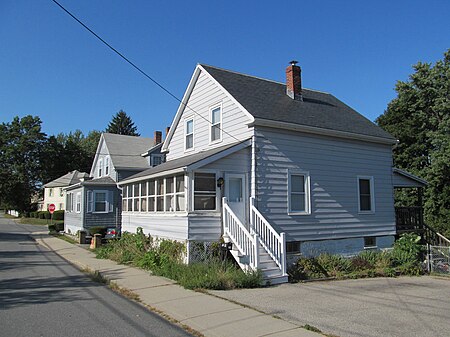Brown Stocking Mill Historic District
Essex County, Massachusetts Registered Historic Place stubsHistoric districts on the National Register of Historic Places in MassachusettsIpswich, MassachusettsNRHP infobox with nocatNational Register of Historic Places in Ipswich, Massachusetts ... and 1 more
Use mdy dates from August 2023

The Brown Stocking Mill Historic District in Ipswich, Massachusetts encompasses the (now demolished) mill building of Harry S. Brown's stocking-making factory, and associated mill worker housing Brown had built. Brown, a supervisor at the Ipswich Mills, established his company in 1906, constructed a factory on Brownville Avenue, and built a series of worker housing units on Brownville and several nearby streets. The historic district was listed on the National Register of Historic Places in 1996. It includes properties at 24—32 Broadway Avenue, 3—41 Brownville Avenue, 10 Burleigh Avenue, 3—5 Burleigh Place, and 35—47 Topsfield Road.
Excerpt from the Wikipedia article Brown Stocking Mill Historic District (License: CC BY-SA 3.0, Authors, Images).Brown Stocking Mill Historic District
Bailey Street,
Geographical coordinates (GPS) Address Nearby Places Show on map
Geographical coordinates (GPS)
| Latitude | Longitude |
|---|---|
| N 42.677222222222 ° | E -70.846944444444 ° |
Address
Bailey Street 5
Massachusetts, United States
Open on Google Maps











